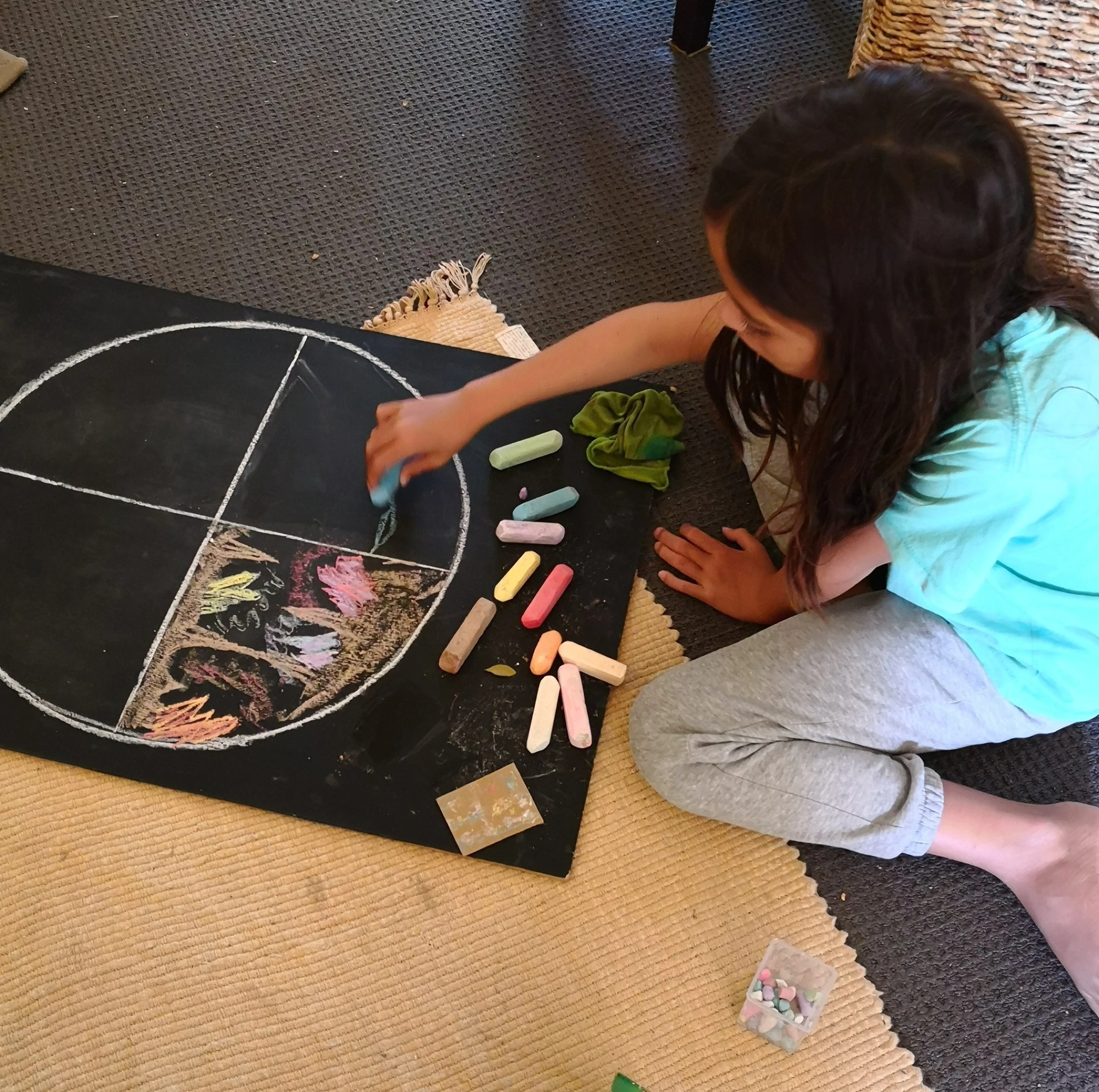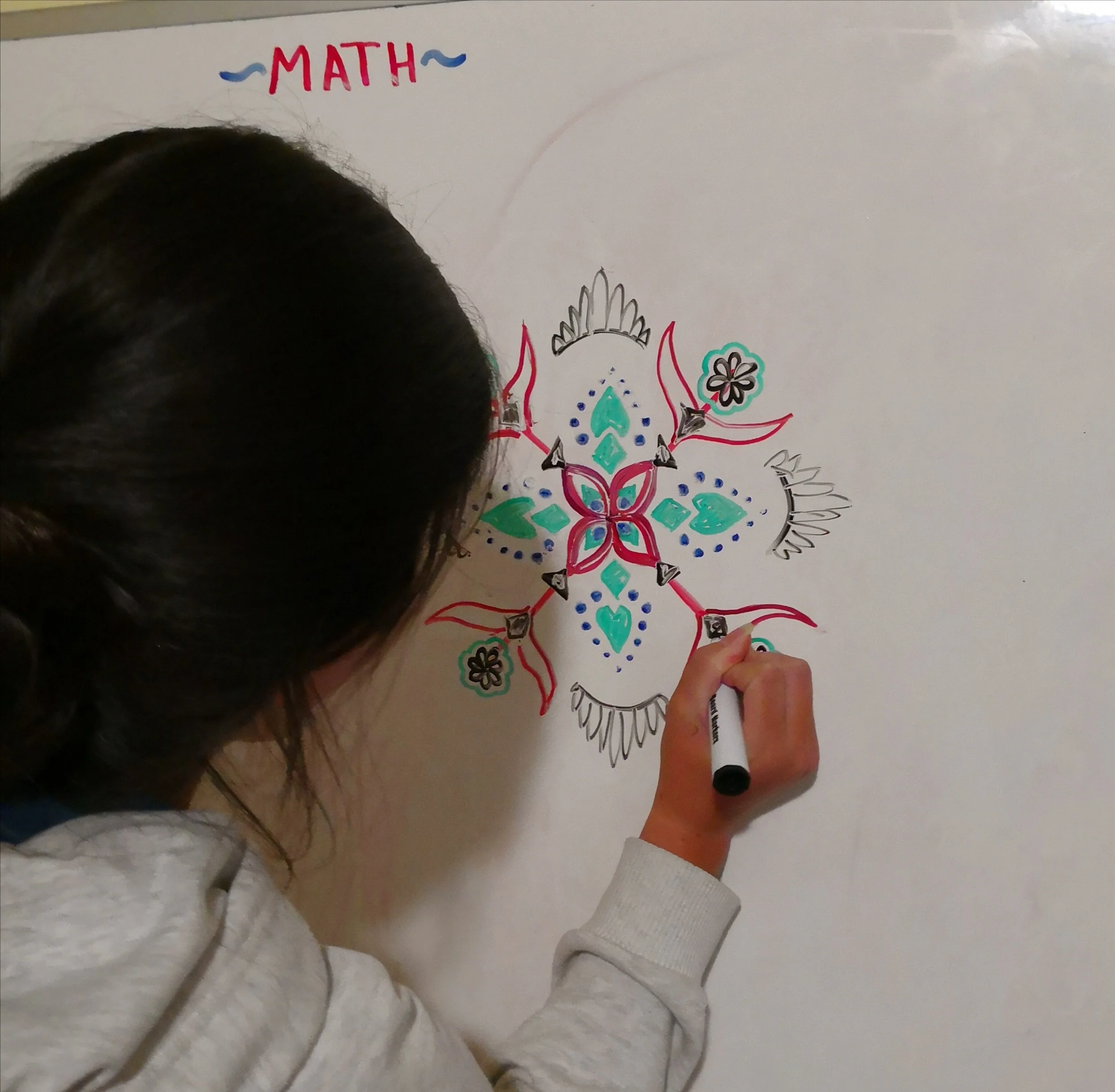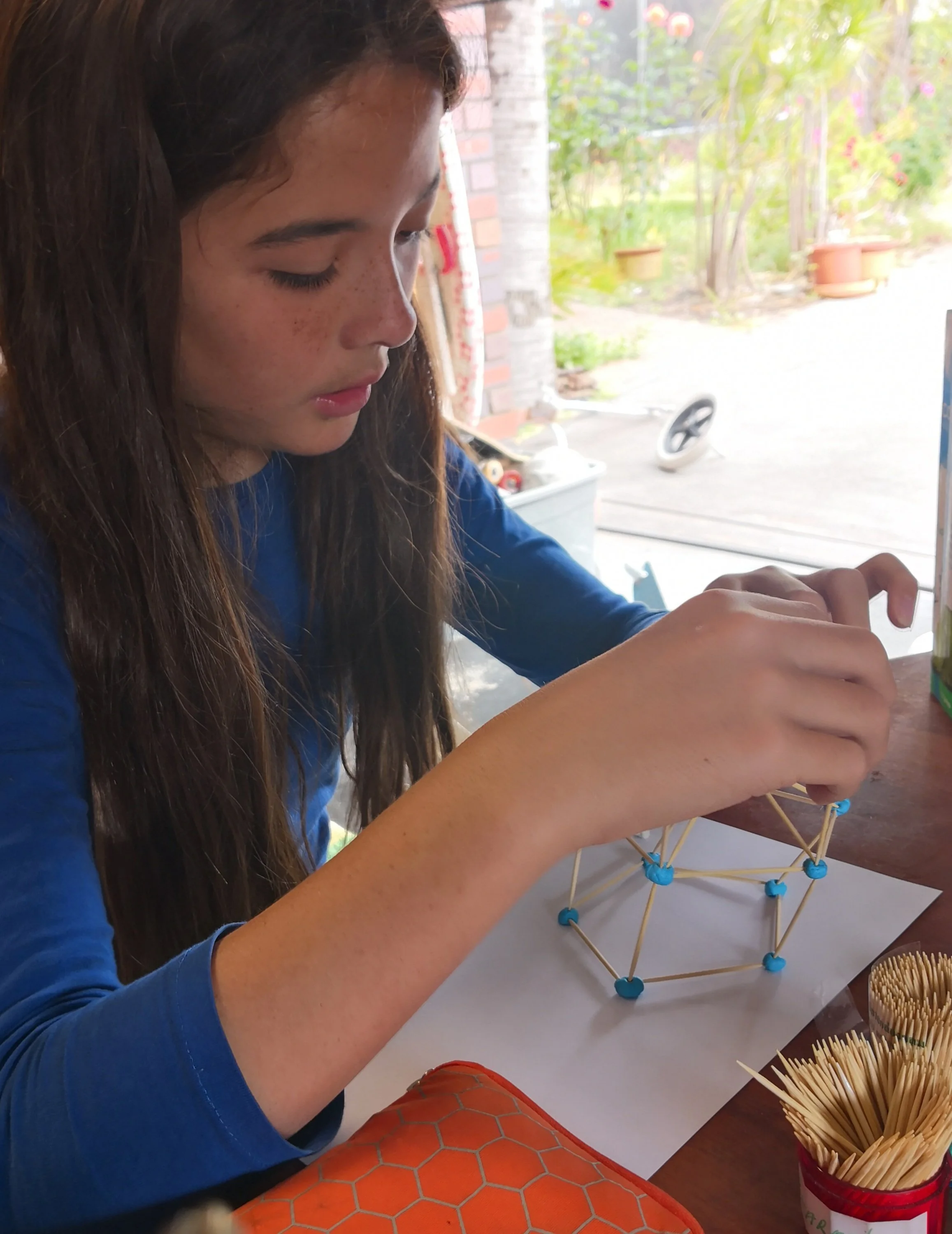Age related skills development guidelines
There is a recognisable natural common, or shared general blueprint, of physiological development and growth in children….
We have the option of reflecting on this understanding when determining suitable creative activities for, and expectations of, our unique child(ren) at various stages of development…
Hi, this article is written with the intention of inspiring reflection (where useful) on the common natural path of child growth and development; and thus furthermore on considering the suitability of activities and environments for individual children at varying stages of development; and how this relates to the classes on offer from this site in geometric arts. The article is not intended in any way as professional child development advice or the like, but rather a take on the aspects relative to my own personal insight, reading, and experience. I personally hereby also acknowledge and highly recommend further reading of Joseph Chiltern Pearce, who dedicated his work to exploration of the potential of unfolding power and possibility of the human being according to natures recognisable blueprint of development… All reference to age & gender is general, there are indeed exceptions and variations everywhere, this is understood…
There is a recognisable natural common or general blueprint of physiological development and growth in children. As parents we are familiar with the often discussed and celebrated growth and accomplishment stages; such as first words around 11 mths, first steps around 12mths old, the often called ‘terrible twos’ - where the child tests out the limits of their relationship to objects in the concrete world; asserting their newfound sense of relative physical only independence while relying on the parent to have pre-knowledged any real danger in the environment. From birth, the baby is growing and practising new ability; from age 2 yrs to 4 yrs, each day the growing child is practising a new increase in physical ability as the body grows and the spine gradually continues to straighten. They can now learn language much more quickly, have gained control of hands and fingers, incline towards mimicking the environment and others actions, and actively like or dislike things.
Sometimes referred to as the magical years; roughly between 4yrs and 7yrs, the ability to move to action with the physical body has now been established and stabilised and “nature shifts us into our dreaming brain, new power manifests” (- Joseph Chiltern Pearce ‘from Magical Child to Magical Teen’). The sensory, motor world is overlaid with internal imagery, play scenarios. All is endowed with feeling. The lounge room floor can become that dangerous pool of lava to be navigated; the found stick is a mighty sword to be used with valour… The child is developing intuitively and in relationship to the living earth and its creatures. It couldn’t be accident that the majority of characters in children books for this age group feature talking animal characters, or that the child loves to e.g. jump in puddles, play in mud, play with a puppy , kitten, or insect. The child is bonding with the earth and exercising sensory information, experiencing new potential worlds playing adult; all under the safe management and verification of the adult. This natural blueprint of development is also preparing for child for the coming shift into the social world.
The young child develops intuitively and through active play.
During the childood years the physical body and the childs capacity for experience are growing in synergy. The childs brain can double in size from birth to age one. Again, as a general average, a child is reported to grow between 5 & 6 cms per year up to adolescence. At the average age 7, the baby teeth start to fall out in preparation for the new set of teeth that accommodate all the new growth in the body size. Nutrition and sleep will also play a relative, but I wouldn’t like to say ‘rigid’ part in all development. The whole body is developing in shifting proportions. Perhaps a little known fact is that the distance of the belly button in proportion to the body shifts a little in terms of body ratio and proportion at various stages of growth, and settles at the peak of physical growth. The brain will generally reach full physical development at age 21yrs; and the area of the brain that asserts the weighing of long-term consequence is reported in research to be the last to mature.
When those first teeth begin to fall, the child’s growth is now fostering the beginning of a new cognition: that he/she is a separate physical person in an environment. Before, he/she and the environment were as one. As they become more aware of having their own separate feelings, they can also begin to consider others feelings. So now also; having practised being able to use an internal image ( imagination) and project it unto an external object, the child can set to work with the ability to learn how to skilfully manage, manipulate, and work on or change external objects.
In the words of Piaget, the 7yrs - 11yrs age range are the years of “concrete operations”. To be able to classify objects, reverse thinking, conserve for a growing concept of time, to think logically and understand analogies; but only for concrete events i.e. that which can tangibly be witnessed and experienced. It becomes an ideal time to play and experiment with measurements and directions, and fine tune motor ability: to experience making and shifting forms; using ideas of direction and symmetry: left, right, up, down, over, under, through etc. Children within this age often like to make collections and order objects according to a category. The energies formerly put into imaginative play and overlay are now directed into accomplishing their ‘tasks’. A sense of self-esteem evolves.
We, as parents and educators, can consider possible realistic expectations of what children are most likely best suited for and capable of at a certain age…
We, as parents and educators, can consider possible realistic and expectations of what children are most likely best suited for and capable of at a certain age, in terms of their whole growth as a human being; relative to their own unique being and experience. We can remember and reflect on our own childhood development, sometimes too easy forgot in the demands of a busy world. We may need to be open-minded about unexpected gifts or talents, or will, emerging in our children that don’t conform to general standards or our own expectations. Every stage of development offers a window of learning opportunity and potential.
What is it likely a child is ready for in the growth period 7yrs to 11yrs, based on a natural growth blueprint? What activities have the potential to best inspire, occupy and suit the child at this age period?
These are some very broad common task suggestions for the age group 7 - 11yrs:
- fine-tuning motor skills, developing handwriting, creating art, moulding and sculpting, operating on a newfound ability to way up the measurement of things, the volume of liquids in different containers, size and weight of different objects. Sculpting objects with the imagination, team sports, learning to play musical instruments, etc, etc…
Thus, this can also be the ideal time for the introduction to many disciplines, including that of creative freehand form drawing. This is why it is offered as a class here on this site from age 7 upwards. With instructional freehand form drawing ones senses can grasp how a shape is formed: the act of creating the forms requires focus as well as mental and physical flexible movement.
Increasing ability and possibility:
Imaginative, skilful and creative mental processes…
Ready for the next stage of increasing power and possibility at age 11/12 yrs: the capacity to ‘stand outside’ all our former modes of perception, and make use of imaginative mental processes to find solutions and assess situations - using the imagination of sequences and processes.
Piaget categorised this as “formal operations”; the ability to use abstract logic and systemically examine and test hypotheses, to test an idea in the mind. To begin to be able to consider moral reasoning. Of course, physiological this is also a time of great changes physiologically with the onset of puberty. The individuality of the child that is developing, and the adolescent can become interested in cues and stories about civilisations of the past; their tasks, perils, and deemed rewards. The ability to create unique, uncopied forms of art develops. The child is usually introduced to mathematical algebra, perhaps coding, advancing understanding of patterning and sequences, and may find some solace in ‘facts’ and perceived surety amid some (varying) rockiness of hormonal changes. There is greater inclination is towards interacting with and being influenced by peers now. There is the physiological developmental need to question and analyse, that can include the ways of the parents, while also experiencing some kind of social continuum and/or expansion.
In regard to what’s on offer within a discipline of geometric arts, Geometric Art patterning, with its focused practical application, juggling of symmetries, scale and options; offering infinite varying levels of complexity of pattern and relationship, with visual outcomes is a great choice.
As is Geometric art foundation skill building, the use of geometric tools requires focused and relaxed application to extend possibilities. The discipline can delight and reward with the actual application and visual discovery of expansive concrete knowledge and experience that can be applied directly and indirectly across other subject fields; in relationship to what is witnessed in the whole environment, naturally and worldly. We can see underlying geometric patterns of nature and applications of geometry in technologies - whilst also broadening the innate ability to conjure with a sense of surety to create individual expressions and solve complex problems of the day.
Focused creative activity, discovery and application of knowledge…
Following adolescence; the subsequent teen years, in terms of brain development, are about fine-tuning how the brain works. It is with this in mind that Projective Geometry classes are offered to age 15/16 plus; when the child has established concrete experience of objects, has naturally practised the ability to apply imagination to systemic processes, and has handled the onset of puberty, as is the natural course of development. Classes in projective geometry open a new world of concrete abstract learning; of the perception of objects through dimensional time and space in ideas and impressions of varying perspective. The participant is able to practise extending their imagination into extended time and space in a concrete tangible manner, simultaneously understanding and actively witnessing the myriad ways of seeing and interpreting. No prior classes in geometric art are required or essential to be able to take part in a projective geometry class.
All aspects of the study of geometric arts generally are not considered as only confined to the windows of possible learning for younger age groups.
The intellect is ideally designed to be a tool of creative, life affirming Intelligence:
“Intelligence the means by which the life process brings its divergent parts into functional, symbiotic relationship” (Pearce)
As evolving adults, we can have more remarkable capacity than we sometimes realise. We can also reclaim and heal the parts of our childhood we have, or may have, considered to be lost….




